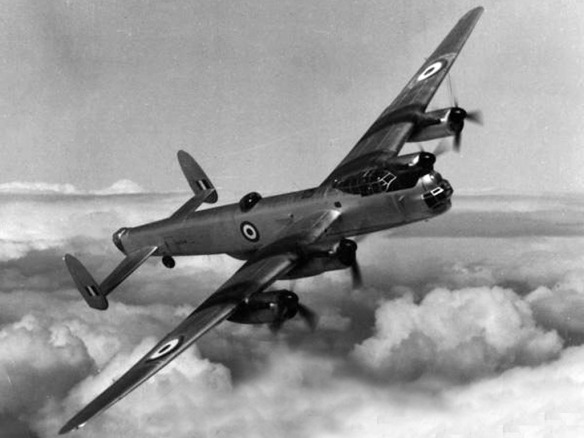Lincoln Bomber.
MiG-15.
On 12 March 1953, a RAF Lincoln (RF531 “C”) of Central Gunnery School was shot down 20 mi (32 km) NE of Lüneburg, Germany by a Soviet MiG-15 as it flew to Berlin on a training flight, resulting in the deaths of the seven crew members.
#
The only RAF aircraft ever acknowledged to have been shot down by Soviet aircraft was an Avro Lincoln, RF531, from the Central Gunnery School (CGS) at Leconfield in Yorkshire. On 12th March 1953 two routine NATO liaison sorties were scheduled for the Lincoln’s of the CGS. These regular fortnightly training flights over Europe provided radar tracking and fighter affiliation training for both RAF and Allied forces and were a realistic simulation of a 6/7 hour high-level operational sortie, particularly for the trainee gunners.
The first Lincoln ‘H’ (RF503) captained by FS Denham, with the CO of the Free Gunnery School, Sqn Ldr F E Doran, in the mid-upper turret, got airborne at 0900 and set course for Germany. During its transit ‘H’ was ‘attacked’ numerous times by Thunderjets of the Dutch Air Force, Belgian Meteors and RAF Vampires. However, as the aircraft neared Kassel, still well inside the British Zone, two MIG 15’s suddenly appeared from underneath the aircraft on the port beam. After visually inspecting the aircraft, the 2 MIG’s peeled away and then conducted a series of high quarter approaches, as if they were about to attack the aircraft, without opening fire – all this was recorded on the cine-cameras attached to the Lincoln’s guns. To ensure the proximity of the Lincoln to the border of the Russian Zone did not provoke further attacks, the Lincoln was turned from a northerly onto a westerly heading and eventually returned safely to Leconfield.
Some 2 hours behind ‘H’ came the second Lincoln ‘C’ (RF531) captained by FS TJ Dunnell with Sqn Ldr H J Fitz, the new CO of 3 Sqn along for a familiarisation sortie as co-pilot. At 13.20hrs, as the aircraft was entering the 20-mile wide air corridor from Hamburg to Berlin, it was attacked by 2 MIG 15’s that opened fire without warning. The Lincoln went down in a steep dive, followed by the MIG’s who continued to pour fire into the crippled aircraft. The aircraft’s starboard wing caught fire and it began to break up in mid-air. The main body of the aircraft crashed into a wood near Bolzenburg, 3 miles inside the Russian Zone, with 4 of the crew still in the wreckage. The remainder of the aircraft fell to ground near Bleckede, on the edge of Luneburg Heath 15 miles SE of Hamburg, inside the British Zone. Three of the crew managed to bail out of the doomed plane, but one of the parachutes failed to open. The 2 other crewmembers landed (one in the British Zone) but both died of their wounds and other injuries. A number of German eyewitnesses confirmed that MIG’s had been responsible for the attack on the aircraft and suggested that one of the fighters had also attacked the descending parachutists – this would explain certain features of the medical reports on the deceased.
Whilst this aircraft had undoubtedly strayed close to, and possibly even slightly over the border, it’s track was clearly intended to take it into the air corridor, a fact that must have been quite obvious to the Russians. The Prime Minister, Winston Churchill, described the incident in the House of Commons as ‘wanton attack’ and a strong note of protest was delivered to the Russians. The Russians replied by claiming that the Lincoln crew had fired first. However, it was soon pointed out that on these training sorties the belt mechanisms were removed from the cannons in the mid-upper turret and the rear turret carried no ammunition. The Russians eventually expressed regret over the death of the 7-crew members and returned their bodies and the wreckage to RAF Celle shortly after the incident.
The Russians were particularly aggressive during this period. A week earlier a USAF F-84 Thunderjet had been shot down by MIG’s luckily the pilot managed to eject safely. A week later a BEA Viking was attacked by MIG’s whilst on a scheduled flight in the Berlin Air Corridor. Two weeks later an American B-50, allegedly on a routine Met flight, was also attacked by MIG’s, but drove them off with cannon fire. For several weeks all NATO aircraft flying near the East German border operated on a fully-armed ‘fire back’ basis, until the crisis had gradually died down.
